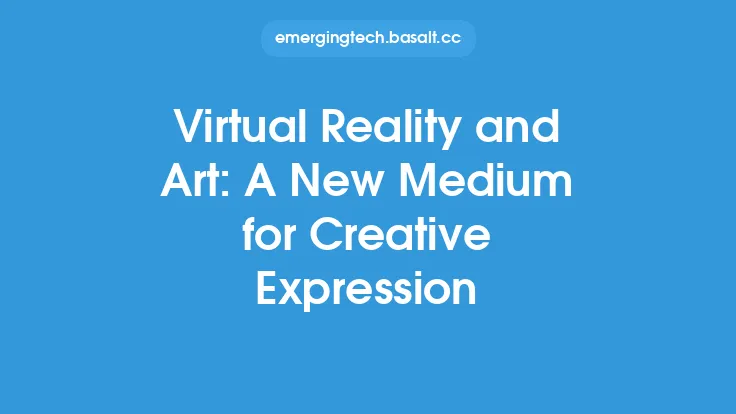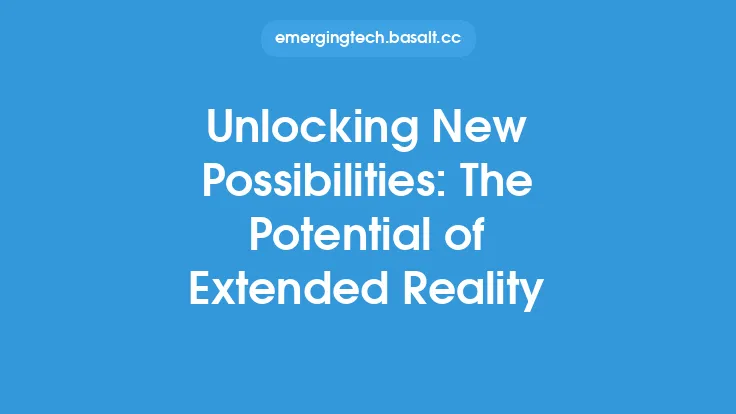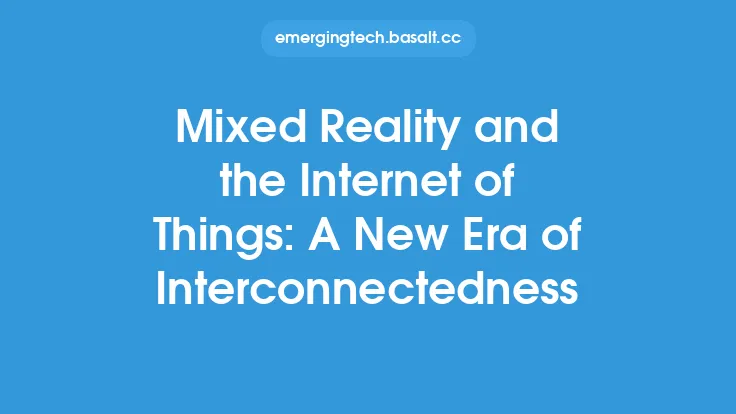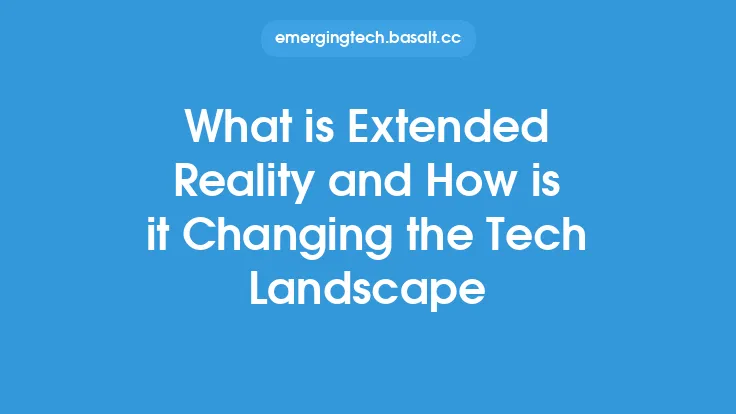The concept of Extended Reality (XR) has been gaining significant attention in recent years, and for good reason. This technology has the potential to revolutionize the way we experience and interact with stories, environments, and each other. At its core, XR is a spectrum of technologies that combine the physical and digital worlds to create immersive, interactive, and engaging experiences. In this article, we will delve into the world of Extended Reality and explore its potential for interactive storytelling and experience.
Introduction to Extended Reality
Extended Reality is an umbrella term that encompasses a range of technologies, including Virtual Reality (VR), Augmented Reality (AR), and Mixed Reality (MR). Each of these technologies offers a unique way of experiencing and interacting with digital information. Virtual Reality creates a completely virtual environment, shutting out the physical world. Augmented Reality, on the other hand, overlays digital information onto the real world, enhancing our experience of it. Mixed Reality combines elements of both, allowing digital objects to interact with the physical environment in a seamless way.
Technical Overview of Extended Reality
From a technical standpoint, Extended Reality relies on a range of technologies to create immersive experiences. These include high-resolution displays, sensors, and tracking systems. In the case of Virtual Reality, Head-Mounted Displays (HMDs) are used to create a fully immersive environment. For Augmented Reality, devices such as smartphones and tablets are used to overlay digital information onto the real world. Mixed Reality, meanwhile, requires more advanced hardware, including see-through displays and sophisticated tracking systems.
Applications of Extended Reality in Interactive Storytelling
One of the most exciting applications of Extended Reality is in the field of interactive storytelling. By using XR technologies, creators can craft immersive, interactive stories that draw the viewer in and allow them to become an active participant. This can be achieved through a range of techniques, including branching narratives, interactive characters, and dynamic environments. For example, a Virtual Reality experience might allow the viewer to step into the shoes of a character and make decisions that affect the outcome of the story. An Augmented Reality experience, meanwhile, might use the viewer's surroundings to create a dynamic, interactive environment that responds to their actions.
Extended Reality in Experience Design
Extended Reality is not just limited to interactive storytelling. It also has the potential to revolutionize the field of experience design. By using XR technologies, designers can create immersive, interactive experiences that simulate real-world environments and scenarios. This can be particularly useful in fields such as education and training, where learners can practice and interact with virtual objects and environments in a safe and controlled way. For example, a Mixed Reality experience might allow medical students to practice surgical procedures on virtual patients, or allow architects to design and interact with virtual buildings.
The Future of Extended Reality
As Extended Reality continues to evolve and improve, we can expect to see even more innovative applications of this technology. One area that holds particular promise is the development of more advanced tracking systems and sensors. These will allow for even more precise and realistic interactions with virtual objects and environments. Another area of development is the creation of more sophisticated artificial intelligence and machine learning algorithms. These will enable XR experiences to become even more dynamic and responsive, allowing for more realistic and engaging interactions.
Challenges and Limitations of Extended Reality
Despite the many potential benefits of Extended Reality, there are also several challenges and limitations that need to be addressed. One of the main challenges is the cost and accessibility of XR hardware and software. Currently, high-end XR devices are still relatively expensive, making them inaccessible to many people. Another challenge is the need for more content and experiences that take advantage of XR technologies. As the industry continues to evolve, we can expect to see more developers and creators producing XR content, but for now, there is still a limited range of experiences available.
Conclusion
In conclusion, Extended Reality has the potential to revolutionize the way we experience and interact with stories, environments, and each other. By combining the physical and digital worlds, XR technologies can create immersive, interactive, and engaging experiences that draw the viewer in and allow them to become an active participant. While there are still several challenges and limitations that need to be addressed, the future of Extended Reality looks bright, with many exciting developments and innovations on the horizon. As this technology continues to evolve and improve, we can expect to see even more innovative applications of XR in the fields of interactive storytelling, experience design, and beyond.





